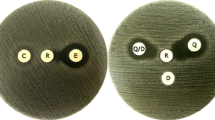Summary
In a multicentre trial in Turkey, the efficacy and safety of sulbactam/ampicillin in the treatment of genitourinary tract, respiratory tract, ear, nose and throat, and skin and soft- tissue infections in a total of 532 patients were evaluated. Standard doses of sulbactam/ampicillin (0.25/0.5g) were administered intramuscularly bid for 4 to 15 days (mean 7.5 days).
The clinical efficacy of sulbactam/ampicillin ranged from 89.8 to 98.2% for each of the indication groups. Cure rates were 98.2% for ear, nose and throat infections; 96.1% for respiratory tract infections; 94.5% for skin and soft tissue; and 89.8% for urinary tract.
Overall antibacterial efficacy in the 517 patients for whom evaluation was possible was 91.3%. Persistence of pathogens was observed in 4.6%, and eradication with development of a superinfection in 4.1%.
In vitro superiority of sulbactam/ampicillin over ampicillin alone was demonstrated in 475 isolates where comparisons were made; the difference between the average inhibition zones of sulbactam/ampicillin and ampicillin was statistically significant (p < 0.001). 72.7% of 161 ampicillin-resistant isolates were sensitive and 19.3% were moderately sensitive to sulbactam/ampicillin.
Clinical cure was achieved in 88.3% of the 145 patients with infections due to ampicillin- resistant organisms, and an additional 7.6% improved. Bacteria were eradicated in 91.7%.
Sulbactam/ampicillin treatment was rated excellent in 87.5% of cases and good in 6.3%.
Adverse side effects tended to be predictable, mild and transient. Treatment was discontinued in only 4 patients because of adverse reactions.
Similar content being viewed by others
References
Abraham EP, Chain E. An enzyme from bacteria able to destroy penicillin. Nature 146: 837, 1940
Aswapokee N, Neu HC. A sulfone β-lactam compound which acts as a β-lactamase inhibitor. Journal of Antibiotics 31: 1238–1244, 1978
Bush K, Sykes RB. β-Lactamase inhibitors in perspective. Journal of Antimicrobial Chemotherapy 11(2): 97–107, 1983
Finegold SM, Kirby WM. Introduction: changing patterns of hospital infections: implications for therapy. American Journal of Medicine 77 (Suppl. 1B): 1–2, 1984
Güneren MF, et al. A multicenter non-comparative study of 1.5 g/day sulbactam/ampicillin administered intramuscularly in the outpatient treatment of various infections (Preliminary Report). Abstracts of the 7th International Symposium on Future Trends in Chemotherapy, Tirrenia, Pisa. Abstract no. 26, 1986
ilton CW, Romantiewicz JA, Labia R. Understanding and management of antibiotic resistance. In Labia (Ed.) B-lactamase inhibition: concepts and therapeutic implications, pp. 7-34, Advanced Therapeutic Communications, Secaucus, NJ, 1984
Harris AA, Levin S, Trenholme GM. Selected aspects of nosocomial infections in the 1980s. American Journal of Medicine 77: 3–9, 1984
Houang ET. Chapman M, Dewhurst J. The prophylactic use of sulbactam and ampicillin in major gynecological surgery. Proceedings of the 13th International Congress of Chemotherapy, Vienna, 1983
Labia R. A novel combination approach to combatting antibiotic resistance. In Labia (Ed.) B-lactamase inhibition: concepts and therapeutic implications, pp. 5-6, Advanced Therapeutic Communications, Secaucus, NJ, 1984
Labia R. Morand A, Lelièvre V, Mattioni D, Kazmierczak A. Sulbactam: biochemical factors involved in its synergy with ampicillin. Reviews of Infectious Diseases 8 (Suppl. 5): S496–502, 1986
Loftier L. A comparative study of sulbactam/ampicillin vs cefotaxime in serious acute soft-tissue, joint and bone infections. Reviews of Infectious Diseases, in press
Neu HC. Changing mechanisms of bacterial resistance. American Journal of Medicine 77: 11–23, 1984
Neu HC. Resistance of bacteria due to β-lactamases. Proceedings of 14th International Congress of Chemotherapy, Kyoto, Japan: 5-12, 1985
Pitts NE. Knirsch AK, Lees L, McBride TJ. Mehta DJ. Experience with sulbactam/ampicillin. Proceedings of 14th International Congress of Chemotherapy, Kyoto, Japan: 25-34, 1985
Retsema JA. English AR, Girard AE. CP-45. 899 in combination with penicillin or ampicillin-resistant Staphylococcus, Haemophilus influenzae and Bacteroides. Antimicrobial Agents and Chemotherapy 17: 615–622. 1980
Retsema JA, English AR, Girard AE, et al. Sulbactam and ampicillin: synergistic isolates of Enterobacteriaceae, methicillinresistant Staphylococcus. and anaerobes. Proceedings of 13th International Congress of Chemotherapy, Vienna. 23/1-23/5, 1983
wyn S. The β-laclam antibiotics: penicillins and cephalosporins in perspective. Hodder and Stoughton. London, pp. 299-301. 311, 1980
Wise R, Andrews JM, Bedford KA. Clavulanic acid and CP-45. 899: a comparison of their in vitro activity in combination with penicillin. Journal of Antimicrobial Chemotherapy 5: 197–206, 1980
Author information
Authors and Affiliations
Rights and permissions
About this article
Cite this article
Güneren, M.F. Clinical Experience with Intramuscular Sulbactam/Ampicillin in the Outpatient Treatment of Various Infections A Multicentre Trial. Drugs 35 (Suppl 7), 57–68 (1988). https://doi.org/10.2165/00003495-198800357-00014
Published:
Issue Date:
DOI: https://doi.org/10.2165/00003495-198800357-00014




